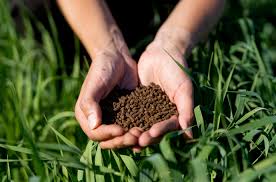
Nov . 27, 2024 21:53 Back to list
Understanding Phosphate in Lawn Fertilizers for Healthy Grass Growth
Understanding Lawn Fertilizer and Phosphate A Crucial Connection for Healthy Turf
Lawn care is an important aspect of maintaining a beautiful home landscape, and understanding the role of fertilizer, particularly phosphate, is essential for homeowners and garden enthusiasts alike. Fertilization not only provides the necessary nutrients for grass growth but also helps to restore soil health. In this article, we will explore lawn fertilizer choices, the significance of phosphate, and best practices for ensuring a vibrant and sustainable lawn.
The Role of Fertilizers in Lawn Care
Fertilizers are classified into three main categories based on their primary nutrient content nitrogen (N), phosphorus (P), and potassium (K). These three nutrients are considered essential for plant growth and development. Nitrogen is crucial for leafy growth, phosphorus supports root development and flowering, while potassium is important for overall plant health and disease resistance.
Phosphorus is represented by the 'P' in the N-P-K ratio found on fertilizer bags. The ratio indicates the percentage by weight of each nutrient. For example, a fertilizer labeled 10-20-10 contains 10% nitrogen, 20% phosphorus, and 10% potassium. When selecting a lawn fertilizer, understanding these ratios helps homeowners choose a product that meets their lawn's specific needs.
The Importance of Phosphate
Phosphate, derived from phosphorus, plays an invaluable role in plant health. It is essential for several key processes, including
- Root Development Phosphate supports the early establishment of roots, helping young grass plants to grow strong and healthy. A well-developed root system improves drought resistance and nutrient uptake.
- Energy Transfer Phosphate is involved in the formation of adenosine triphosphate (ATP), a molecule that provides energy for various plant processes. This energy is critical for growth, flowering, and overall plant vitality.
- Stress Resistance Adequate phosphate levels contribute to a plant's ability to withstand environmental stress, such as drought and disease. Healthy plants with sufficient phosphate are better equipped to recover from adverse conditions.
Choosing the Right Lawn Fertilizer
When selecting a lawn fertilizer, it's essential to consider several factors
lawn fertilizer phosphate

1. Soil Test Before applying fertilizer, conducting a soil test can provide insight into existing nutrient levels and pH. This information allows for tailored fertilizer applications, preventing over-fertilization and ensuring balanced nutrient distribution.
2. Grass Type Different grass species have varying nutrient requirements. Cool-season grasses, like Kentucky bluegrass, thrive in cooler temperatures and may have different phosphate needs compared to warm-season grasses, such as Bermuda grass.
3. Application Timing Timing is crucial for effective fertilization. Early spring and fall are generally the best times to fertilize cool-season grasses, while warm-season grasses benefit from fertilization in late spring and summer.
Best Practices for Fertilizing
To optimize the benefits of phosphate in lawn fertilizer, consider the following best practices
- Follow Label Instructions Always adhere to the recommended application rates on the fertilizer label. Over-application can lead to nutrient runoff and environmental harm.
- Water Thoroughly After applying fertilizer, ensure the lawn is watered adequately. This helps to dissolve and distribute the nutrients into the soil, making them accessible for grass roots.
- Target Problem Areas Observe your lawn for areas that appear stressed, discolored, or underperforming. Spot-treat these areas with a targeted fertilizer application to address specific nutrient deficiencies.
- Consider Slow-Release Formulas Slow-release fertilizers provide nutrients gradually over time, minimizing the risk of leaching and reducing the frequency of applications.
Conclusion
Understanding the significance of lawn fertilizer, particularly the role of phosphate, is crucial for anyone looking to achieve a thriving and resilient lawn. By choosing the right fertilizer, understanding the needs of your particular grass type, and following best application practices, homeowners can nurture their lawns into lush green spaces that enhance the beauty of their properties. Ultimately, a healthy lawn is not only a pleasure to look at but contributes positively to the environment by improving air quality and supporting local ecosystems. So, take the time to learn about your lawn's needs, and give the gift of health and beauty to your outdoor space.
-
10 10 10 Fertilizer Organic—Balanced NPK for All Plants
NewsJul.30,2025
-
Premium 10 10 10 Fertilizer Organic for Balanced Plant Growth
NewsJul.29,2025
-
Premium 10 10 10 Fertilizer Organic for Balanced Plant Growth
NewsJul.29,2025
-
Premium 10 10 10 Fertilizer Organic for Balanced Plant Growth
NewsJul.29,2025
-
50 Pound Bags of 13-13-13 Fertilizer for All Plants – Bulk & Organic Options
NewsJul.28,2025
-
High-Efficiency 15-30-15 Granular Fertilizer for Healthy Crops
NewsJul.28,2025
